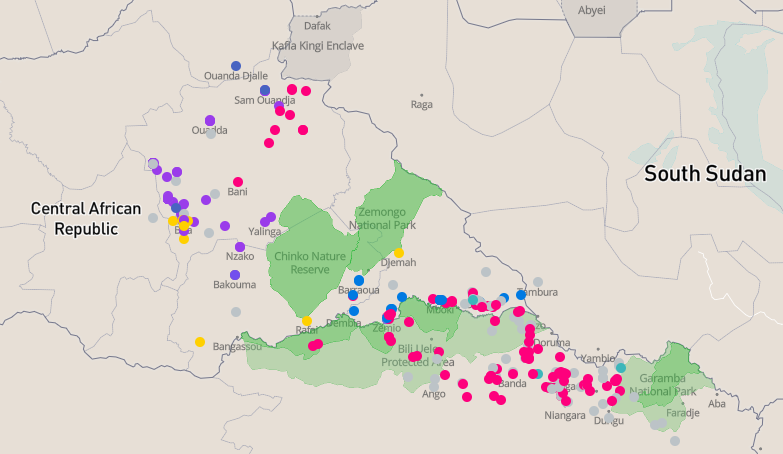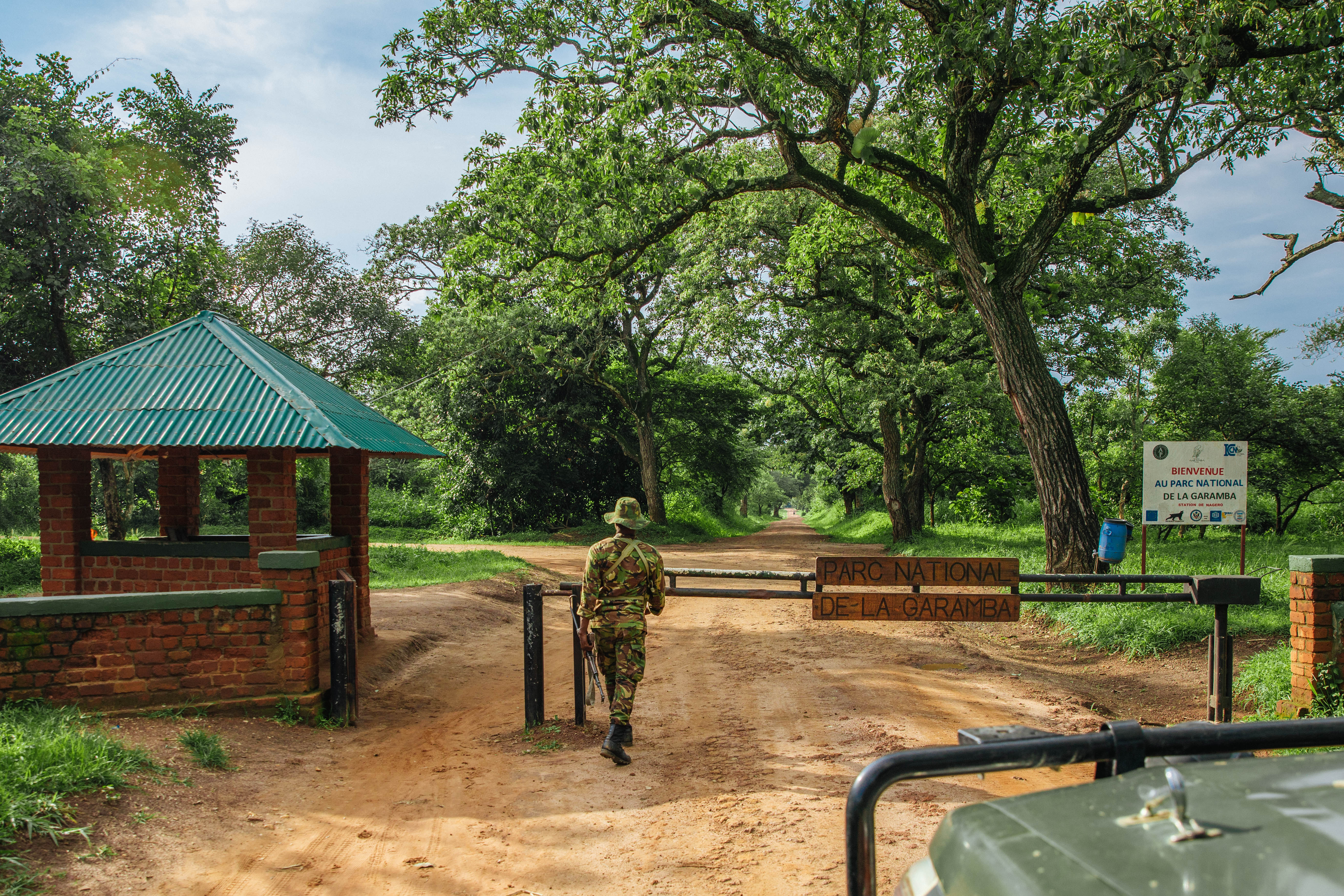Central Africans living in northern Democratic Republic of Congo (DRC) and eastern Central African Republic (CAR) are continually threatened by armed groups operating in and around their communities. Along with violence caused by clashes between armed groups vying for control of parts of the region, groups frequently loot civilians for supplies, targeting people as they conduct livelihood activities.
Often, these same armed groups which threaten and prey on civilians in the region are also illegally exploiting natural resources. This ranges from controlling artisanal gold and diamond mines to poaching elephants and trafficking ivory. This illicit exploitation of natural resources reinforces existing patterns of poverty and trauma in communities affected by armed groups.

Invisible Children programs, including the USAID-funded Community Resilience in Central Africa (CRCA) Activity, take a holistic approach to addressing these challenges by integrating efforts to improve human and wildlife security throughout the Mbomou-Uele border region in eastern CAR and northern DRC. By integrating conservation-focused activities into programs like the Early Warning Network, Crisis Tracker, and community organizing efforts, we are helping local leaders ensure that their communities and environments are protected from violent armed groups.
Our partners, including local organizations and international conservation organizations, are critical partners in these programs. Organizations like African Parks and African Wildlife Foundation, who we work with as part of CRCA, bring conservation expertise to the table as well as long-term commitments to stabilizing national parks and other protected areas in the region, which can help transform them from magnets for armed groups into islands of stability that can benefit surrounding communities. Their commitments and expertise, along with the wisdom of local community leaders has helped Invisible Children develop innovative programs that are improving the safety of Central African communities and local wildlife. However, these partnerships are only one part of the equation.

US government agencies continue to play an important role in improving the safety of Central Africans and their environment. Funding from USAID (the United States Agency for International Development) for the CRCA project helps make Invisible Children’s efforts to address human and wildlife security possible. Additionally, the US Fish and Wildlife Service is frequently a pioneer in supporting distressed or under-appreciated protected areas in Central Africa. In recent years, they’ve provided flexible, adaptable programming to Garamba National Park and the Bili Uele protected area in northern DRC and Chinko Nature Reserve in eastern CAR, responding to needs ranging from local community engagement to improving the capacity of law enforcement actors and protected area managers.
The challenges facing Central African communities are complex and broad. Addressing them, and ensuring that civilians in this region have the safety they deserve, requires holistic approaches and collaboration between global partners, with local communities themselves at the center. At Invisible Children, we’re proud to be part of solutions that are making progress toward an end to violent conflict and grateful to work alongside local partners, international conservation organizations, and US government agencies who are all playing key roles in the process. As long as we continue to work together, we are confident that a peaceful, thriving future is possible for all Central Africans.
Programs described in this blog are made possible with the support of the American People through the United States Agency for International Development (USAID). The contents of this post are the sole responsibility of Invisible Children and do not necessarily reflect the views of USAID or the United States Government.

Think people should hear about this?